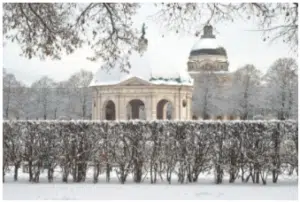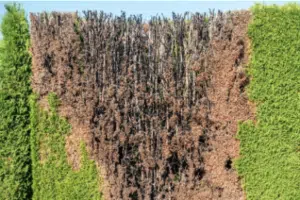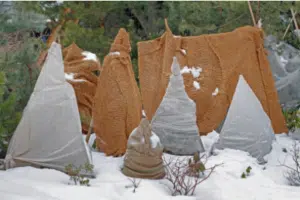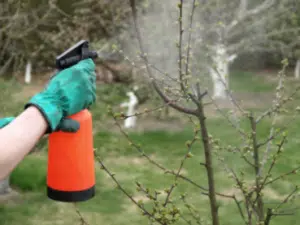HALF PRICE SALE ON EVERYTHING ENDS ON FRIDAY
NEW SEASON BARE ROOTS AT 50% OFF LAST SEASONS PRICES – ENDS 31 JULY
***TODAY ONLY – GET AN EXTRA 10% OFF SALE PRICES WITH CODE FLASH10***
Menu
HALF PRICE SALE ON EVERYTHING ENDS ON FRIDAY
NEW SEASON BARE ROOTS AT 50% OFF LAST SEASONS PRICES – ENDS 31 JULY
***TODAY ONLY – GET AN EXTRA 10% OFF SALE PRICES WITH CODE FLASH10***
 https://www.hopesgrovenurseries.co.uk/wp-content/uploads/2018/01/berberis-gree-or-p-winter-750x500.jpg
Green berberis hedge with berries in winter Berberis thunbergii
https://www.hopesgrovenurseries.co.uk/wp-content/uploads/2018/01/berberis-gree-or-p-winter-750x500.jpg
Green berberis hedge with berries in winter Berberis thunbergii



An effective way to protect hedges in harsh winter conditions is to cover hedges and shrubs that are at risk in protective wrapping; this can range from different materials such as fleece, bracken, straw, and polystyrene. You can also apply a thick layer of mulch at the base of your hedges. The protective wrapping is intended for vulnerable plants but can also be applied to tougher greenery. Protective wrapping prevents the foliage from going brown and general wilting through insulation, while the thick layer of mulch helps to hydrate and give heat to the plants.

While most evergreen hedges and shrubbery are at risk during the colder months, hedges similar to Hazel, Christmas Tree and Sarcococca (otherwise known as Sweetbox) are less likely to suffer in comparison to Boxwood, Escallonia, and Griselinia hedging. We wouldn’t leave anything living out in the cold, so look after your hedges and shrubs this winter and they’ll reward you with a beautiful garden in spring!
Many of our customers buy topiary plants (and hedging plants) to grow in containers, one frequently asked question is how large does the pot that I plant them into need to be?
Expert horticultural advice on the merits and pitfalls of planting bare root yews, and how to get the best from them.
Pleached trees are a garden-design favourite, because they provide an instant leafy screen that looks stylish as soon as it’s planted. They offer privacy for you and they help to muffle noise and that’s becoming more important in our busy world. They provide a living screen that’s far more eco-friendly than a stark wooden fence…